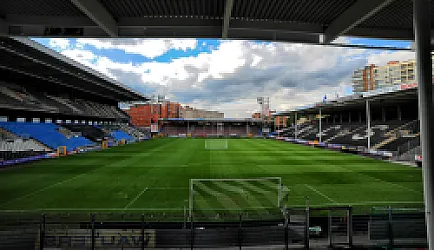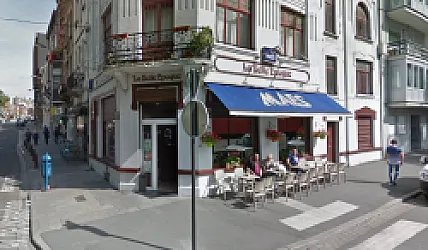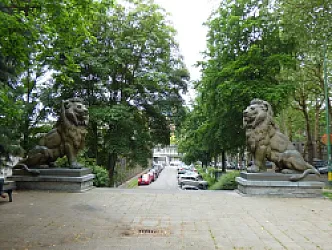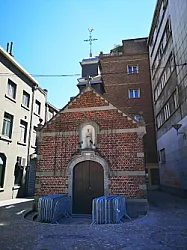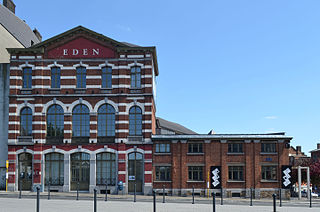Visitez Charleroi en 2 jours
12 POIs incontournables, parcours optimisés et anecdotes.
Chargement de la carte...
Vous allez visiter les plus beaux points d'intérêt de Charleroi
2 Days in Charleroi — A Gritty, Golden Weekend That Surprises
Charleroi stole my heart the moment I wandered off the beaten path. The city wears its industrial past like a bruise and a badge, a proud lesson in reinvention. Known as the “Black Country,” Charleroi can seem rough at first. Some say it’s overrated or even gloomy, but my visit proved otherwise. I found warmth, bold street art, and evenings that buzzed with unexpected life. This was my honest awakening to a place that refuses to be one-dimensional.
Why visit? Because Charleroi is not a postcard city. It’s a layered, human place where factories meet theaters and food trucks sit beside grand churches. The soundscape mixes tram clacks, church bells, and distant chants from Stade du Pays de Charleroi on match day. You’ll taste strong coffee and local beer, see striking murals, and feel the stone cool inside St. Fiacre Church. Highlights like Eden, Passage de la Bourse, and the sculptural surprises around Caporal Trésignies Barracks give you real contrasts. If you wonder what to see in Charleroi, expect authenticity, grit, and quiet beauty hidden in plain sight.
Planning can feel overwhelming. Charleroi keeps popping up with new galleries and secret courtyards. You could easily spend weeks exploring. I get the pressure of short trips. That’s exactly why this guide helps. Below you’ll find a focused Charleroi itinerary for a compact adventure. It’s tailored for a first time in Charleroi visit who wants to taste the city’s soul without burning out. I’ll show you how to see the best parts in a memorable, manageable way.
Key tip: Pace yourself and mix indoor and outdoor stops. Charleroi’s contrasts reward slow discovery. Take time inside Eden or St. Fiacre Church, then wander an urban block to reset. This keeps energy up and lets you notice small details. Wear comfortable shoes and keep your camera ready. Now let’s dive into the itinerary and make the most of these two intoxicating days.

Quick Mini Guide to Charleroi
Where to stay:
- Centre-ville / Gare Sud — easy access to Passage de la Bourse, cafés and trains.
- Near Place Charles II (Rive Gauche) — modern shopping and short walks to Eden and murals.
- Book hotels with secure bike storage if you plan to photograph industrial sites along the Sambre.
When to visit:
- Spring–early autumn for outdoor street-art walks and riverfront light; match a matchday at Stade du Pays de Charleroi for atmosphere.
- Weekdays are quieter for museums and the Caporal Trésignies Barracks; weekends best for nightlife and interactive tours.
Things to do:
- Morning: Eden cultural hub and local exhibitions — check opening times.
- Walk Passage de la Bourse and the mural trail — great for industrial-era photography.
- Visit St. Fiacre Church for its local parish feel and architecture away from tourist crowds.
- Tour Caporal Trésignies Barracks to glimpse military/local history; finish with a stadium visit at Stade du Pays de Charleroi.
- Book an interactive city game: The Alchemist CHARLEROI or The Trophy of the Tribes CHARLEROI — immersive, team-based city tours (reserve ahead).
Don't forget:
- Cash and local bus/TEC app for short hops; many spots are walkable but spread out.
- Wear good walking shoes for cobbles and industrial sites; bring a camera for gritty photogenic scenes.
- Respect working sites and private property when exploring former industrial zones.
Jour 1 - Charleroi
5 POIs à découvrirJour 1 - Matin à Charleroi
5 Points d'intérêt - Durée : 3h45 - Distance : 2.9 km - Marche : 0h39
Caserne Caporal Trésignies
- La caserne Trésignies est une ancienne installation militaire à Charleroi construite en 1887 pour abriter les troupes militaires du 13e régiment de ligne et du 1er régiment de Chasseurs à pied.
- Le bâtiment est un vaste quadrilatère en briques avec une entrée néo-médiévale.
- Agrandie dans les années 1938-1939 avec un complexe moderniste.
- Elle abrite désormais le Musée des Chasseurs à pied, l'Université Ouverte et des espaces pour l'entrepreneuriat.

Quai 10
- Le Quai 10, situé à Charleroi et inauguré en janvier 2017, est un lieu culturel regroupant un cinéma, un espace de jeux vidéo et une brasserie, et est également appelé Centre de l'image animée et interactive.
- Le Quai 10 comprend cinq salles de cinéma, dont une du Cinéma Le Parc.
- L'espace gaming du Quai 10 est ouvert à tous et vise à éduquer et divertir en renforçant la compréhension et la créativité liées aux jeux vidéo, pour les petits comme pour les grands.
- Une brasserie est présente sur les quais de Sambre.
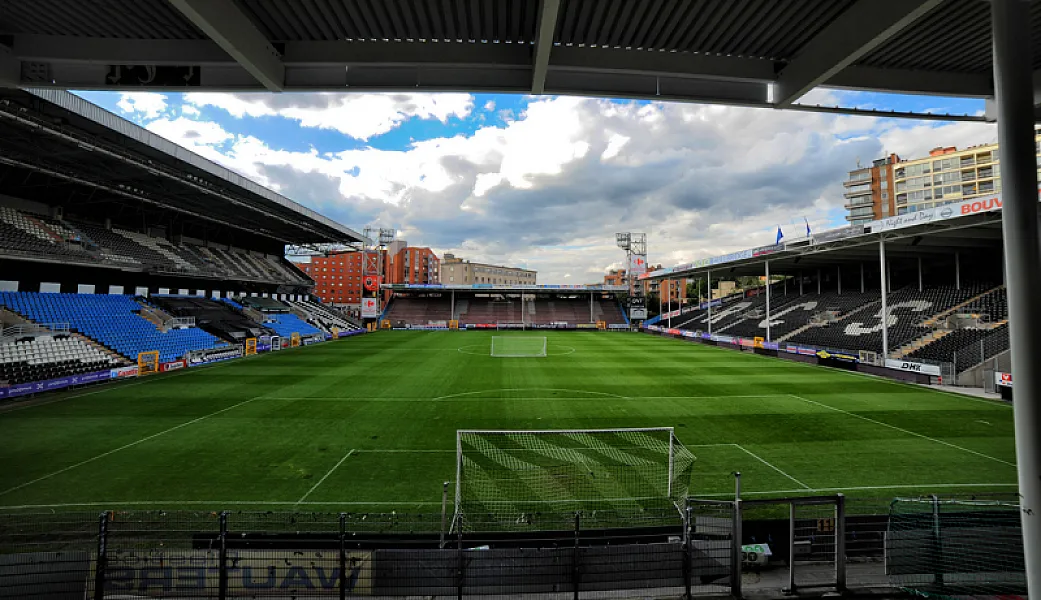
Stade du Pays de Charleroi
- Le stade du Pays de Charleroi est une enceinte sportive située à Charleroi en Belgique.
- Principal équipement sportif de la Ville de Charleroi, Il est utilisé par le club de football du Royal Charleroi Sporting Club depuis son inauguration en 1939.
- Après 21 ans, le club a retrouvé l'Europe en participant à la Ligue Europa suite à la saison 2014-2015.
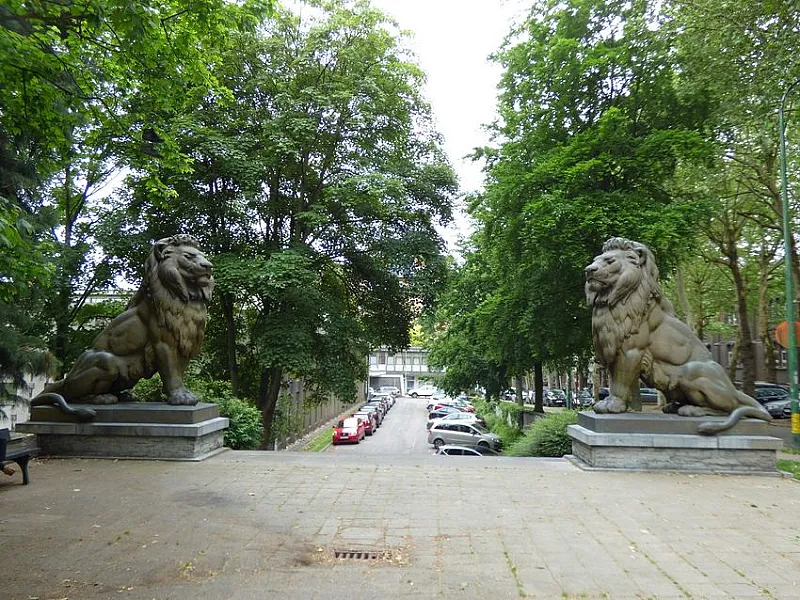
Totor et Tutur
- Au XIXe siècle, le Palais de Justice de Charleroi est relocalisé.
- Le nouveau Palais est construit entre 1877 et 1878, et deux sculptures de lions sont placées devant l'entrée en 1879, symbolisant la Justice.
- À la fin des années 60, les lions surnommées populairement Totor et Tutur sont déplacés sur le boulevard Defontaine.
- Leurs noms proviendraient des noms des deux fils du concierge du Palais de Justice, Nestor et Arthur, communément surnommés au Palais, Totor et Tutur.
- C'est le journaliste Louis Bufquin des Essarts qui a popularisé les lions, en les faisant dialoguer sur les événements politiques et potins locaux.
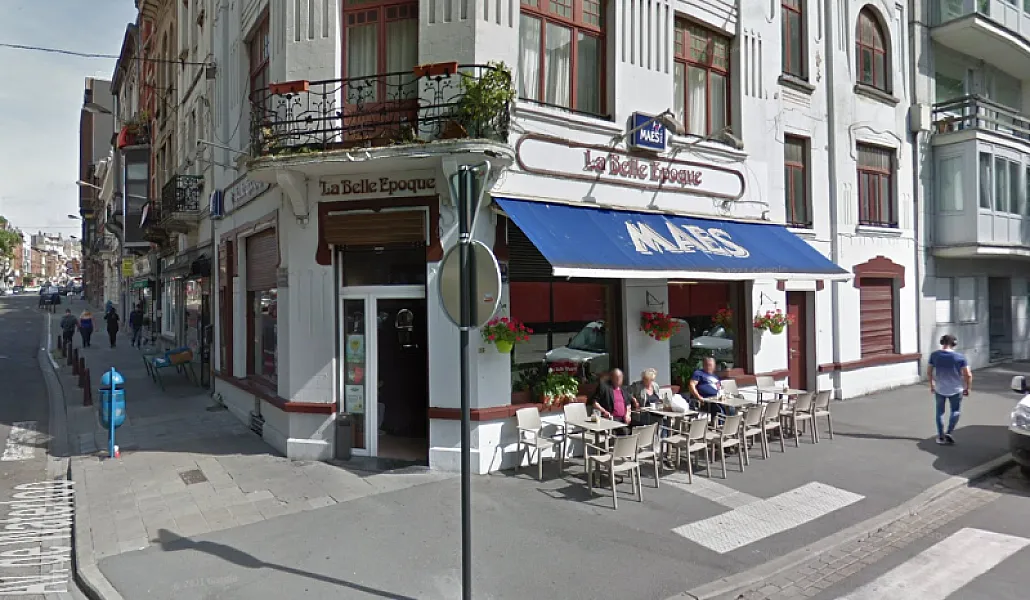
La Belle Epoque
Jour 2 - Charleroi
7 POIs à découvrirJour 2 - Matin à Charleroi
5 Points d'intérêt - Durée : 3h45 - Distance : 1.6 km - Marche : 0h20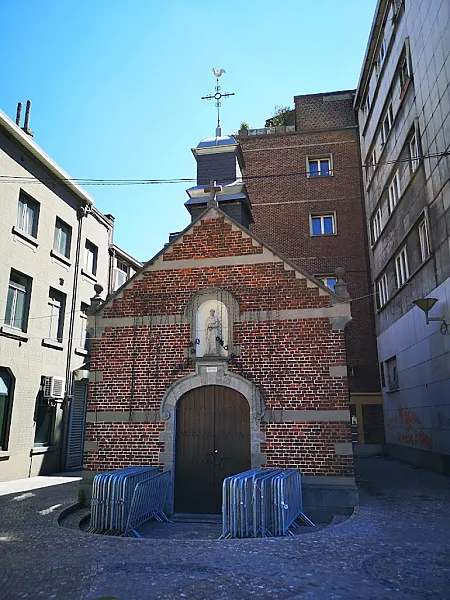
Église Saint-Fiacre
- Après la prise de Charleroi par les troupes de Louis XIV en 1667, un hôpital militaire en forme de U est construit près de la Sambre avec une chapelle dédiée à Saint-Fiacre.
- Au fil du temps, les bâtiments de l'hôpital changent de fonction, mais la chapelle persiste.
- L'histoire de la chapelle a connu alors de nombreux hauts et bas...
- Avec la Révolution française, la chapelle est démolie.
- Elle est reconstruite un siècle plus tard puis, à nouveau démolie à la fin du 19ème siècle. La chapelle actuelle, des années 80, est fortement inspirée de la deuxième chapelle, avec un aspect classique, un clocheton, un autel et un retable provenant de l'ancien Couvent des Capucins.

Passage de la Bourse
- Le Passage de la Bourse est une galerie couverte.
- Elle a été construite à la fin du XIXe siècle.
- Les bâtiments extérieurs sont de style néo-Renaissance flamande, tandis que les façades intérieures sont de style néo-classique.
- Les façades intérieures présentent trois registres néo-classiques: dorique, ionique et corinthien.
- Le Passage de la Bourse a été restauré en 2003, rendant son éclat architectural.
- Au fil des ans, la galerie est devenue un lieu apprécié pour les arts, la musique et le divertissement.

Hôtel de ville de Charleroi
- L'hôtel de ville est un bâtiment éclectique combinant Classicisme et Art déco.
- Il a été inauguré en 1936.
- Le beffroi, construit en pierre bleue, pierre blanche et en briques, mesure 70 mètres de hauteur et possède un carillon de quarante-sept cloches.
- De nombreux artistes ont contribué à la décoration de l'ensemble, dont Alphonse Darville et Georges Wasterlain.
- Avant l'hôtel de ville, un quartier de cavalerie occupait l'emplacement dans la forteresse construite en 1667.

Hôtel des Postes
- Construit entre 1907 et 1911 pour accueillir la Poste Centrale de Charleroi, le bâtiment est un repère architectural majeur de la ville.
- L'architecture présente une esthétique éclectique de la fin du XIXe siècle mélangée avec les besoins des réseaux de télécommunications en expansion.
- La tour du bâtiment, haute de 45 mètres, servait à la dispersion des fils télégraphiques et contenait le premier central téléphonique de la région.
- Le style néo-Renaissance flamande se reflète dans les détails architecturaux, avec des éléments rappelant d'autres bâtiments de l'époque.
- Après divers usages, le bâtiment a été restauré pour accueillir la librairie Molière en 1996.

Temple protestant
- Le temple protestant ou l'Église protestante de Charleroi est un édifice religieux protestant.
- Le temple a été inauguré le 1er novembre 1880.
- Il occupe l'emplacement des anciennes fortifications de la ville.
- L'intérieur de l'église est sobre et centré sur la prédication du ministre, reflétant les valeurs protestantes.
- Les principes architecturaux protestants se traduisent par l'absence d'autel, de cierges, de croix, ou d'icônes dans l'église.
Jour 2 - Après-midi à Charleroi
2 Points d'intérêt - Durée : 1h30 - Distance : 0.2 km - Marche : 0h03
Eden
- L'Eden est une salle de spectacle.
- L'Eden était à l'origine un complexe récréatif construit par l'architecte Auguste Cador dans le dernier quart du XIXe siècle.
- Le bâtiment principal est élevé en briques et en calcaire, avec une façade de trois niveaux et cinq travées de baies cintrées sous un fronton triangulaire.
- En plus d'être une salle de spectacle, l'Eden héberge également Charleroi Academy, un centre culturel.
Beffroi de Charleroi
- L'Hôtel de Ville de Charleroi, construit dans les années 1920-1930, est devenu un symbole de la croissance économique et industrielle de la région au XIXe siècle, transformant la ville en un centre prospère.
- Le beffroi de Charleroi est un emblème des libertés communales et un symbole de la puissance des villes.
- Le beffroi est un édifice remarquable de style Art-Déco.
- Il s'agit d'une tour de 70 mètres de haut et de 4000 tonnes, couronnée de bronze, avec un carillon de 47 cloches.
- Il est construit avec des pierres bleues, des pierres blanches et des briques spéciales. .
Where to Stay in Charleroi
Location matters in Charleroi because the city is compact but varied: a short walk or tram ride can take you from the dense, working-class streets of the centre to industrial heritage sites and a large stadium in Marcinelle. For a two-day visit you want to minimize transit time so you can soak up the sights—Eden, Passage de la Bourse and St. Fiacre Church sit comfortably within the central area, while the Stade du Pays de Charleroi and some military heritage like the Caporal Trésignies Barracks lie a little farther out. Choosing your base with that geography in mind makes your trip calmer and more efficient.
Charleroi’s heart is often described in local terms as Ville-Basse (the lower town) around the train station and commerce areas, and Ville-Haute (the upper town) with its more residential slopes. For two days, most visitors find Ville-Basse the most practical base: you’re within easy walking distance of Passage de la Bourse and the lively streets near Eden, and public transport links radiate from here. If you expect to attend a match or want a quieter, greener setting, Marcinelle is practical for evening return trips to the stadium and industrial sites but slightly farther from the compact centre.
Practical transport tips help you decide. The city is served by the Charleroi metro/premetro and a dense TEC/Metro bus network; the main rail hub at Charleroi-Sud gives fast regional connections and airport shuttles to Brussels South Charleroi Airport. For a short stay prioritize a place within a 10–20 minute walk of Charleroi-Sud or the main tram stops so you spend your time exploring rather than changing lines.
Neighborhood choice should hinge on what matters most to you: maximum walkability to central sights and cafés, or proximity to the stadium and quieter streets. If you’re undecided, a central location near Passage de la Bourse gives the best balance—you can reach Eden, St. Fiacre Church and the barracks area quickly and still hop a tram to Marcinelle for the stadium.
Finally, relax about safety and comfort: pick accommodations with clear reviews mentioning easy check-in, luggage storage and nearby public transport, and aim for places on well-lit streets. A small compromise on room size for a great location will repay you with more time to enjoy Charleroi’s distinctive mix of heritage and contemporary life.
Getting Around Charleroi
Charleroi is surprisingly easy to explore once you get the hang of it: the city is served by the regional TEC network of metro (light rail) and bus lines that connect the main sights, neighborhoods and the big station at Charleroi-Sud. Routes are compact, stops are frequent, and many drivers and fellow passengers are used to helping visitors — so even if your French is limited, you’ll find the system friendly and straightforward. I always enjoy the small adventure of hopping on a tram and watching the city unfold outside the window 🚇.
A practical tip: always buy and validate your ticket before you travel. You can get single tickets and day options from machines at major stops, some kiosks, or via the official app and website. If you prefer plastic cards, look into the regional smartcard options, but for most short visits a paper or mobile ticket is easiest. Conductors will check occasionally, so keeping your validated ticket handy saves you stress.
Use Google Maps as your transit companion — it reliably shows TEC lines, timetables and walking directions between stops and attractions. Enter your destination (Eden, St. Fiacre Church, or Caporal Trésignies Barracks) and the app will give you step-by-step options with estimated travel times and transfer points. I’ll also glance at a station map when I arrive so I know which platform to aim for; a quick look at the stops prevents wasted circles around big squares 🗺️.
If you plan multiple trips in a day, consider a day pass or a multi-ride bundle: single fares typically fall in the low euro range (around €2–€3), so a day ticket often pays off if you’re hopping between sites. Walking short stretches between nearby stops is free and scenic, and regional trains can save time for longer hops outside the city. Combining on-foot wandering with targeted rides is the best way to stretch your budget and discover hidden corners.
On my last visit we wanted to see Eden and then head to St. Fiacre Church before checking out the Caporal Trésignies Barracks. We bought a day ticket, validated it, and took a short bus that dropped us within a five-minute walk of St. Fiacre — the driver even pointed out the right stop when I asked. From there it was a pleasant walk to the barracks area, and the rest of the afternoon was a mix of trams and strolling. If you stay relaxed and validate your ticket, navigation in Charleroi becomes part of the fun rather than a chore 🎫.
What to Pack for Charleroi
Charleroi is a gritty, fascinating city of industrial heritage, sculptures tucked into alleyways, lively bars and small theatres — perfect for a short, intense two-day visit. I like to travel light but prepared: on my last quick trip I was out for 10+ hours both days, walked nearly 15 miles in total, and learned which few items made everything smoother. Below are the essentials that kept me comfortable, safe and ready for impromptu discoveries.
1. Comfortable walking shoes (required): I always bring a pair I’ve already broken in — for example, Merrell Moab 2 or Adidas Ultraboost. In Charleroi you’ll be on mixed pavements, steep streets and some gritty industrial areas; on my first afternoon I walked 12 km (about 7.5 miles) and my blisters-free feet were the reason I could stay out exploring until midnight. Good cushioning and a sticky sole mean you won’t bail early because your feet hurt.
2. Cross-body bag (anti-theft): I use a small zip-close cross-body with an interior pocket and a slash-resistant strap. In busy bars and around transit hubs it’s invaluable — once I felt a hand at a tram stop and my zipped bag protected my wallet. It keeps your hands free for photos, a beer, or a theatre programme, and the zip prevents easy access from pickpockets.
3. Weather-appropriate clothing for Charleroi: Layers are your friend. Even in summer I pack a light sweater and a packable rain jacket. On one rainy afternoon a sudden mist turned the industrial landscape atmospheric but wet — the jacket let me keep going without hunting down a café. Think comfortable trousers, a breathable top, and one smart layer for an evening theatre or nicer restaurant.
4. Power adapter (Belgium Type E) and phone essentials: Belgium uses Type E plugs at 230V — bring a reliable adapter so your phone and camera can stay charged. I once arrived without one and spent the first hour hunting a shop; it cost me a missed theatre curtain call. An adapter gets you power in your hotel and in cafés where you might recharge between stops.
5. Power bank (10,000–20,000 mAh): I carry a 10,000 mAh pack that gives me a full phone top-up and a bit extra for a camera. When I was mapping street art and using mobile tickets for a theatre, my battery drained fast — the power bank kept me connected for directions, translations and photos the whole day.
6. Compact umbrella (optional but recommended): Charleroi’s weather can flip to drizzle unexpectedly, so a small foldable umbrella saved me on two trips. It takes almost no room and keeps your camera and notes dry — optional, but I wouldn’t skip it for an autumn or spring visit.
Enjoy Your Trip to Charleroi!
In just two days you’ll visit eight thoughtfully selected spots across Charleroi, packed with culture, history and lively urban energy. From the atmospheric Eden theatre to the peaceful St. Fiacre Church and the striking Caporal Trésignies Barracks, this plan gives you everything you need to sample local food, bars, sculptures and memorable architecture.
Keep in mind this is a GUIDE, not a rigid timetable — let the city breathe around your plans. Make space to leave room for the unexpected: getting pleasantly lost in back streets, stopping at a random café, or lingering in a small museum can become the trip’s brightest moments. Don’t feel like you must see EVERYTHING; the magic often comes from unplanned discoveries.
I hope you feel ready and curious — I’m excited for you! Embrace the theatres, the urban art, the historic corners and the friendly cafés. You’re going to love wandering Charleroi’s mix of industrial past and creative present and creating unforgettable memories with every turn.
Want to explore in a playful way? Try Coddy’s gamified tours: The Alchemist CHARLEROI and The Trophy of the Tribes CHARLEROI are fun, interactive ways to learn the city’s stories while solving challenges — a great option for solo explorers or groups.
Share your discoveries or ask questions if you want tips — I’d love to hear about your adventure. Safe travels! Have fun! Enjoy!
Envie de plus d'aventure ?
Découvrez nos jeux d'évasion urbains pour transformer votre visite en aventure interactive !











